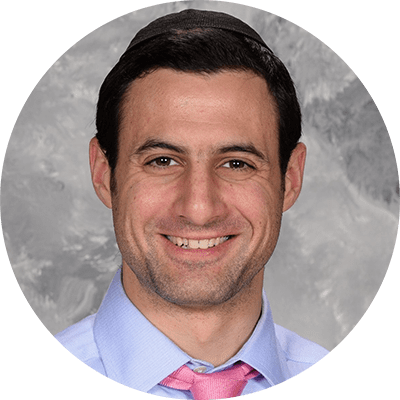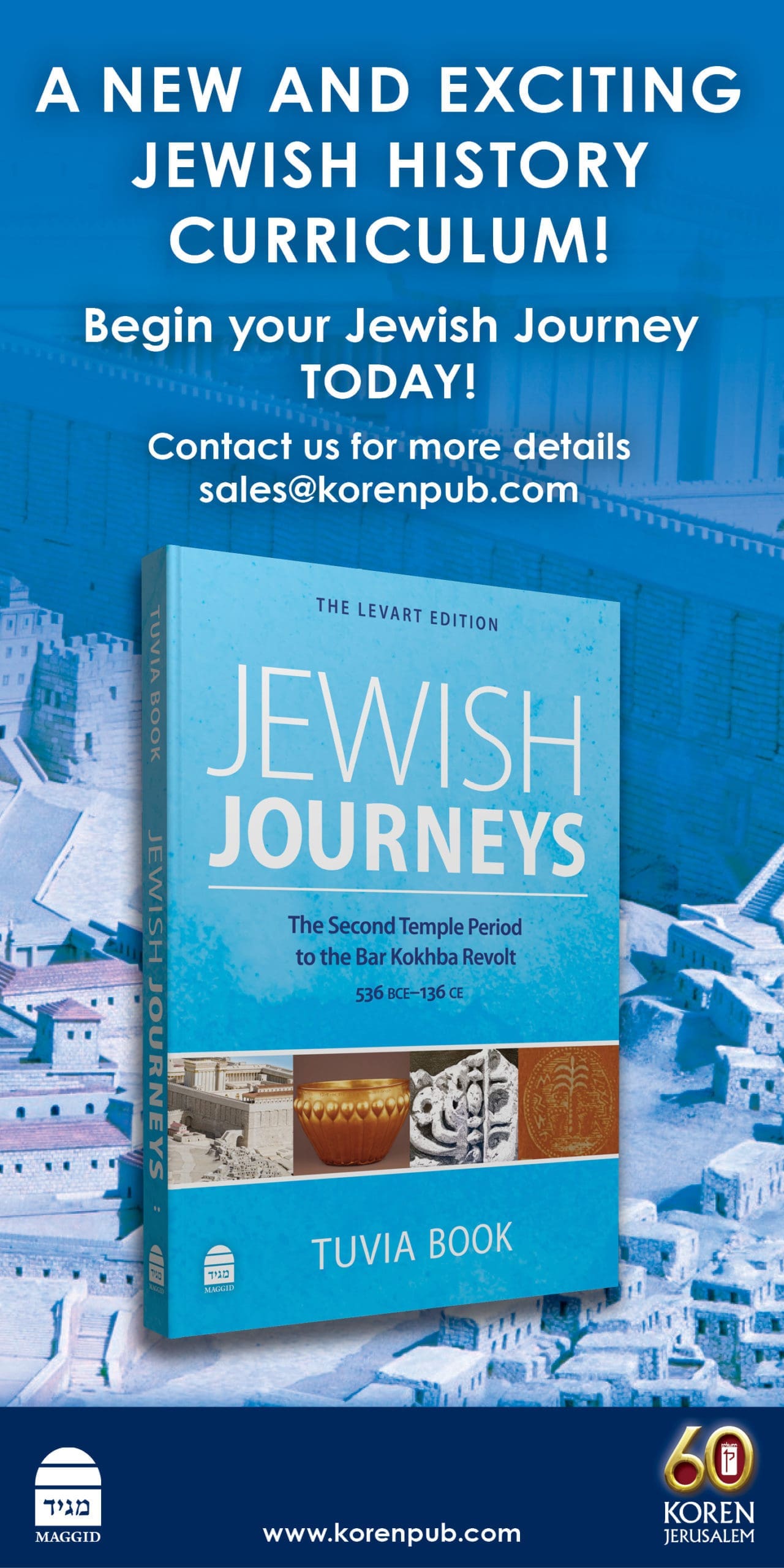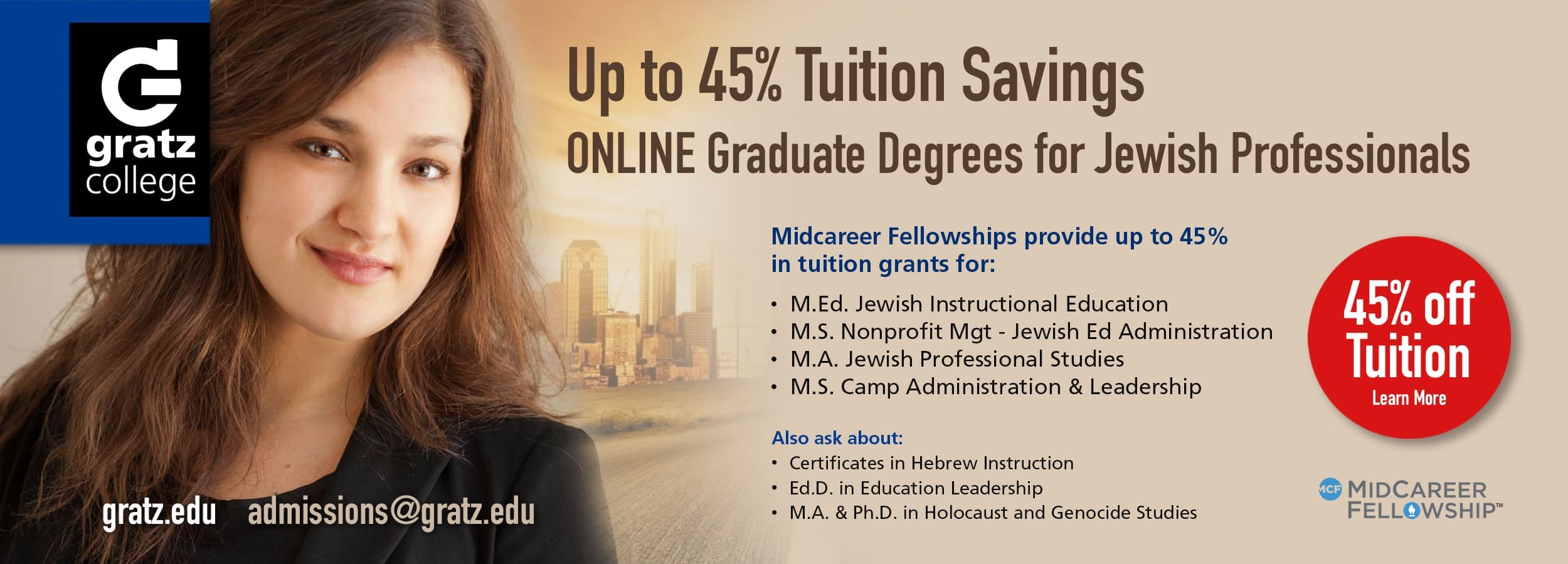What if you could teach a subject that grapples with the most important issues facing Judaism today? What if you could teach a subject that offers students more growth in Jewish literacy per class period than any other? What if you could teach a subject that bridges the gap between your students and Jews throughout space and time? What if you could teach a subject that provides your students with wisdom from the past, gratitude for the present, and inspiration for the future? This is the promise of Jewish History.
Jewish History need not be a dry exercise in rote learning of dates and old names—it can be one of the most impactful, interesting, and meaningful classes that we teach. I will attempt to demonstrate this by referencing one of the Jewish History courses we teach at the Fuchs Mizrachi High School as a paradigm of such an approach.
The course is driven by the idea that “Understanding Jewish history can enrich, inspire, and inform our engagement in Jewish life and the Jewish community.” There are three major units of study, each of which is guided by an essential question and big ideas. Chronologically, the course moves from within the Classical period all the way to the Modern period of Jewish history, but the units are organized based on theme rather than chronology. This thematic organization allows for more coherence and development of each idea, as I will demonstrate below.
Responding to Persecution
The first unit addresses Jewish responses to persecution throughout the ages. By casting Jews as subjects in their own story who actively responded to their experiences, the curriculum steers away from a “lachrymose conception of Jewish history” while making no attempt to hide the inescapable historical reality of Jewish suffering. Topics addressed in this unit include (but are not limited to) Jewish oppression at the hands of the Seleucid Greeks; the Roman persecutions in the first and second centuries CE; Jewish suffering in medieval Ashkenaz including crusader massacres, blood libels, and anti-Jewish artwork; persecutions in medieval Christian Spain including the phenomenon of forced Disputations, the Spanish Inquisition, and the 1492 expulsion; the Jews’ “Dhimmi” status and other tensions under Islamic rule; and the Khmelnitzky Massacres of 1648-1649.
As we study each example of persecution we ask, “How did the Jews respond?” In each lesson we see examples of one, two, or three of the following: a) Maintaining and expressing hope and faith in God and the Jewish future; b) Actively commemorating and memorializing the loss (especially through liturgy); c) Identifying sources of meaning and inspiration in light of the suffering. At the end of the unit, students create a webpage that memorializes a particular persecution. They outline examples of the types of responses we’ve studied and create their own responses following the model of “faith, commemoration, and meaning.”
In addition to presenting a framework for how to respond to contemporary antisemitism—which, disturbingly, is more relevant than it should be—the study of the past two millennia of Jewish persecutions offers several other important benefits. First, the material is saturated with opportunities to enhance Jewish literacy. As we move from one key center of Jewish life to another, we meet crucial figures such as R. Akiva, Bar Kokhba, Maimonides, Nahmanides, and R. Meir of Rothenberg. Their lives and experiences are framed in ways that shed light on contemporary Jewish life, not simply memorized without context. Reciting Hallel on Yom Yerushalayim can be an eminently profound experience for one who knows that the Jewish people last controlled Jerusalem in 70 CE and that our attempt to recapture it in the Bar Kokhba Revolt resulted in the brutal Hadrianic persecutions and the martyrdom of many great sages. This background framing impacts on contemporary Jewish experience, sweetening the celebrations and transforming the mourning events (like the fast days) into meaningful moments.
Understanding the history of Jewish persecutions can also enhance our students’ experience of regular Jewish life in the twenty-first century. I often assign my students a journal writing exercise that requires them to write from two perspectives. The first asks them to place themselves in the mind of an individual living during the event we are studying, for example, as a witness to the burning of 24 cartloads of Jewish books perpetrated after the Paris Disputation of 1242. After using their writing to empathize with a Jew living 800 years ago on a different continent, I ask them to return to the present moment and write from their own perspective and to reflect upon the freedom and safety they enjoy in America and how unique such an experience is. I ask them to consider the existence of the State of Israel and how privileged we are to witness a reality that our ancestors could only dream of. With all this in mind, I ask them to think seriously about the responsibility such circumstances place upon them. As Solomon Grayzel writes in A History of the Jews, “Jewish history presents a challenge to the modern Jew. The heroes of the Jewish past…Their life and effort were wasted unless they lead to action on our part, to defend what we received from the past and, if possible, to enrich it further.” We cannot appreciate the Jewish present and we will not inspire the Jewish future without an intimate knowledge of the Jewish past.
Rabbinic Authority, Halakha, and Torah Study
Moving beyond a history of persecution, the second major unit in the course deals with Judaism’s survival in exile: Rabbinic authority, the role of halakha, and the centrality of Torah study in Jewish life. This unit highlights the texts, personalities, and ideas that have guided, animated, and sustained Judaism since the destruction of the Second Temple. We first deal with how Judaism responded to the loss of national autonomy and Temple service by placing a greater emphasis on Torah study and a meticulous observance of halakha (what we call the “Holy Shift”).
This shift introduces a survey of Rabbinic literature—the Tannaim and the Mishnah, the Amoraim and the Gemara, the Geonim and responsa literature, the classical medieval luminaries and their works, and finally R. Yosef Karo and the Shulhan Arukh. The focus on Rabbinic literature invites an exploration of the critique of the Rabbinic enterprise. We meet the Karaites in medieval Baghdad and discuss their questions on the origin and authority of the Oral Law as well as the Rabbinic responses to these challenges and the early Christian criticisms of the Pharisaic tendency to overemphasize the letter of the law at the expense of the spirit. This includes readings from modern thinkers like Rabbi Soloveitchik, who make the case for a passionate and spirited yet scrupulous observance of traditional halakha. Finally, the unit concludes with an examination of the most recent Pew Research on American Jews and the story it tells regarding the correlation between halakhic observance and Jewish continuity. The historical framing contributes greatly to contemporary questions students ask such as, “Why should I care what some rabbis said thousands of years ago? And why does Judaism care so much about details? Why can’t we just be good people?”
Israel and the Nations: Isolation or Integration?
The third unit opens the critical questions of the relationship between Jews and their host cultures. To what extent should Jews embrace or reject the ideas and values of their surrounding society? What are the risks and potential benefits of integration with the broader culture versus isolating ourselves from it? Opposing responses to this question are explored in a variety of eras and locales—the Talmudic era, Geonic literature, medieval Ashkenaz and the Golden Age of Spain, the Maimonidean controversy, and finally with an introduction to Jewish responses to the Enlightenment in the 18th through 20th centuries. While studying this content, students are challenged to understand and articulate the strengths of both sides of the isolation vs. integration dialectic. They gain a deeper appreciation for the worldview of their own community as well as the views of communities that take different stances on this issue, all leading to learning which is core to contemporary Jewish life.
Jewish History is for All Jews
While the specifics I shared above were developed for our school, a modern-Orthodox high school with specific ideological goals, the underlying principle of teaching Jewish history to provide students with foundations and grounding for constructing their identities can be adapted to other schools with different ideologies. The specific examples, as well as the direction of the exploration, can change, but the core knowledge will see significant overlap. Jewish History then becomes a framework for engaged Jewish life and provides an extraordinary opportunity to generate meaningful dialogue and greater understanding among Jews of different orientations.
Jewish History is inspiring. It promotes a sense of Jewish pride. It generates reflection on a personal level and unites us on a national level. Jewish history explains how we got to where we are and helps to guide our path forward. As one of the most powerful tools in our educational arsenal, we’d be wise to use it well.

Rick Schindelheim teaches Judaic studies at the Fuchs Mizrachi Upper School (Cleveland, OH). He holds degrees in Psychology and Education from Yeshiva University and John Carroll University.
Reach 10,000 Jewish educational professionals. Advertise in the upcoming issue of Jewish Educational Leadership.






